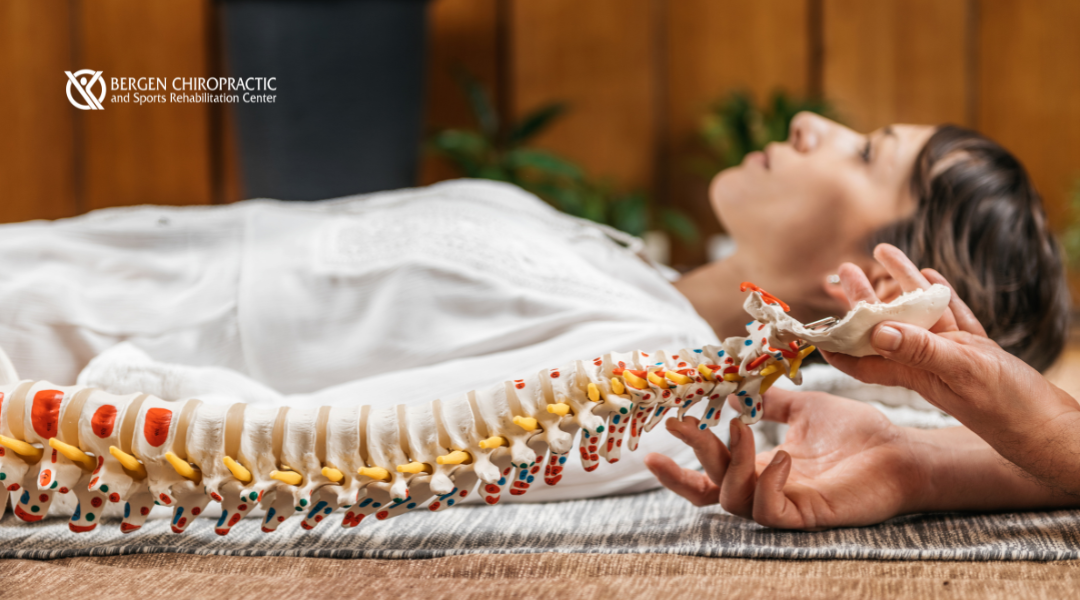It can be challenging to understand spinal fractures, as they all have different causes, symptoms, and treatments. Whether in the thoracic or lumbar spine, fractured vertebrae can lead to further injury if not dealt with immediately. There are several pain management and treatment options for spinal fractures, be it through physical therapy or surgical procedures.
What is a Vertebral or Spinal Fracture?
A spinal injury can range from a mild ligament or muscle strain to fractures or dislocations of the bony vertebrae. When a vertebra becomes seriously fractured or dislocated, it can cause bone fragments to pinch and damage the spinal nerves or spinal cord! Many spinal injuries do not require surgery; however, severe long-term issues can result from untreated or mistreated major fractures.
Most spinal fractures occur in the lower back region — 64% occur in the thoracolumbar or lower back region, while 5-10% occur in the cervical or neck region.
How Do Spinal Fractures Occur?
The spine is rather delicate as even minor falls or trauma can produce spine fractures. The primary causes of spinal fractures are:
- Car accidents (45%)
- Falls (20%)
- Sports (15%)
- Acts of violence (15%)
- Various activities (5%)
Other causes of spinal fractures are diseases such as spine tumors and osteoporosis, which weaken the bones, leading to severe pain and vertebral compression fractures.
Spinal Fracture Symptoms
There are various symptoms of a spinal fracture that depend on the severity and location of the injury. Some symptoms include:
- Back or neck pain
- Numbness
- Tingling
- Muscle spasm
- Weakness
- Bowel/ bladder changes
- Paralysis or loss of movement in the arms or legs
Paralysis can indicate a more profound spinal cord injury. Luckily, fractures do not always cause spinal cord damage and rarely is the spinal cord completely severed.
How are Spinal Fractures Diagnosed?
Often, a spinal injury will land you in the emergency room, and an Emergency Medicine specialist will be the first to examine the injury. For severe fractures, other specialists will be called in for further assessment. Doctors will check your breathing and perform a physical exam of the spine. Until adequately diagnosed, the spine is kept immobile in a neck or back brace.
CT Scan
The only way to properly diagnose the extent of a spinal injury is through an X-ray, which views the bony vertebrae in your spine, revealing any fractures. A Computed Tomography (CT) scan is the next step toward diagnosis. Safe and noninvasive, a CT scan uses an X-ray beam and a computer to create two-dimensional images of the spine, helpful in viewing any abnormal movement in the bony structures.
MRI
Finally, a Magnetic Resonance Imaging (MRI) scan is another noninvasive test that uses magnetic fields and radiofrequency waves to detail the soft tissues of the spine. An MRI offers visibility of the nerves and discs, allowing evaluation of soft tissue damage to ligaments and discs.
How are Vertebral Fractures Classified?
Vertebral fractures are classified as either:
- Stable and Unstable Fractures
- Minor and Major Fractures
- Denis Classification Method
Each classification type differentiates the injury’s severity, placement, and stability. Together, they can help doctors determine the best treatment option for vertebral fractures.
Stable and Unstable Fractures
A stable fracture does not cause spinal deformity or neurological (i.e., nerve-related) problems, permitting your spine to carry and distribute weight — of course, not as well as if there were not a fracture, but well enough to function securely.
On the other hand, unstable fractures make it difficult for the spine to carry or distribute weight. Progressing and causing further damage, these fractures can result in spinal deformity.
Minor and Major Fractures
A minor fracture occurs when part of the vertebra’s posterior or back side elements has broken. Minor fractures affect those parts of the spine that are less important to spinal column stability.
For example, the spinous process and facet joints are the posterior elements of the spine. The injury is not considered overly serious when fracturing this part of the vertebrae.
Major fractures are defined as the fracture of the pedicles, lamina, or vertebrae. Vertebral body fractures are considered major because these areas carry so much weight and are responsible for distributing force. When these parts of the spine fracture, they cause severe vertebral misalignment and increase the risk of nerve damage. Because the pedicles and lamina are necessary to keep your spine stable, your spine becomes unstable when they fracture.
The Denis Classification
The Denis Classification method is commonly utilized by doctors to classify a spinal fracture in the thoracic, lumbar, or thoracolumbar spinal regions. Doctors can efficiently classify a fracture’s severity and placement by dividing the lateral or side spine into three sections (i.e., front, middle, and back).
The anterior column is the front part of the vertebra or the part that faces toward your body. Half of the front anterior column is the vertebral body and intervertebral disc.
Next, the middle column or the back half of the vertebral body is vital for spinal stability. When a fracture occurs in the middle and anterior or posterior columns, nerve damage and spinal instability are likely. On the other hand, if the middle column remains strong and intact, you have an increased chance of stability.
Finally, the back column includes all sections of the vertebra on the back side of the posterior column. The pedicles, lamina, and spinous process are all part of the posterior column.
Visualizing three columns makes diagnosing the extent of a spinal fracture and its stability easier. For example, if the fracture only affects the front or anterior column, the spine may be sufficiently stable to withstand the body’s weight. However, unlike posterior fractures, spinal fractures in the anterior or middle column are generally unstable.
Types of Vertebral Fractures
There are four main types of vertebral fractures:
- Compression
- Burst
- Flexion-distraction
- Fracture dislocation
Compression Fracture
Compression fractures are common in patients with osteoporosis or other bone-weakening diseases. While the vertebra can absorb a lot of pressure, there is only so much it can handle before the bone fractures under stress. A sudden force or tremendous pressure can cause vertebrae to fracture.
Is a Compression Fracture the Same As a Broken Back?
When a bone sustains more pressure than it can handle, it fractures or breaks. A vertebral compression fracture is the most common vertebral fracture and occurs when a downward force shatters or collapses the vertebrae. A large enough force may even send bone fragments into the spinal canal, resulting in a burst fracture. In this way, a more severe spinal cord compression fracture is essentially the same as a broken back.
Burst Fracture
Caused by severe trauma such as a car accident, burst fractures happen when an extreme force crushes the vertebra. A burst fracture not only affects one part of the vertebra but fractures it in several places. In addition, bony fragments spread throughout when the vertebra is crushed so wholly, causing spinal cord injury.
Flexion-Distraction Fracture
A flexion-distraction fracture results after severe trauma. For example, if your spine is forced to flex forward while another sudden forward movement places incredible stress on the spine, your vertebrae will break.
Fracture Dislocation
The final type of vertebral fracture is fracture dislocation, a double-doozy spinal injury. You are suffering from fracture dislocation when you experience any of the above fractures and the vertebra moves significantly or dislocates. Generally, these fractures involve all three columns of the Denis Classification, causing extreme spinal instability.
How are These Fractures Treated?
Treatment for vertebral fractures depends on:
- Other injuries and their treatment
- The particular fracture pattern
- Whether a neurological injury is present or not
After stabilization of other life-threatening injuries, the doctor evaluates the spinal fracture pattern to decide if spine surgery is necessary.
A stable fracture may not require surgical treatment but can be stabilized by wearing a neck or back brace for 8 to 12 weeks. On the other hand, an unstable neck fracture or dislocation may require more treatment through traction, which realigns the spine to its correct position.
Spine surgery is often required for unstable burst fractures with:
- Multiple bone fragments
- Severe loss of vertebral body height
- Excessive forward bending near the injury
- Significant nerve injury or disk pinching
- Unstable ligament damage
Flexion fracture patterns with the above symptoms are treated with surgical decompression of the spinal canal and stabilization of the fracture. A laminectomy surgically decompresses the spine by removing the bony arch or structure, pressuring the spinal cord on the backside of the spinal canal. It relieves pressure by providing extra space for the spinal cord to drift backward.
Fusion, another surgical treatment used to treat unstable fractures, joins two vertebrae with a bone graft and hardware such as plates, rods, or cages and transforms two vertebrae into a solid piece of bone.
Minimally invasive procedures also treat vertebral compression fractures commonly caused by osteoporosis and spinal tumors. For example, vertebroplasty injects bone cement into a fractured vertebral body. Another procedure, called kyphoplasty, first inserts and inflates a balloon in order to expand the compressed vertebra. Once inflated, the space is then filled with bone cement.
Dr. Doerr is the Best Chiropractor in New Jersey for Treating Spinal Fractures!
At Bergen Chiropractic and Sports Rehabilitation Center, our chiropractic team, under the leadership of Dr. Gregory Doerr, adheres to the highest and most professional medical standards to provide superior chiropractic help. Our mission is to provide unparalleled patient care in a comfortable, healing atmosphere.
Access our contact form or call us at (201) 945-4075 to learn more about our chiropractic care services! Our offices at 532 Anderson Avenue, Cliffside Park, NJ 07010, and 62 Summit Ave, Hackensack, NJ 07601, are ready to welcome you as we proudly serve the areas of New York, New Jersey, Philadelphia, PA, and Baltimore, MD. Also, feel free to access our blog, Facebook, and Instagram pages for more information on chiropractic adjustments!
References
- “Fractured Spine (Vertebrae): Types, Long-Term Effects & Treatment.” Cleveland Clinic, my.clevelandclinic.org/health/diseases/17498-spinal-fractures. Accessed 12 Sept. 2022.
- “Spine Fracture, Spinal Fractures, Vertebral Fractures, Compression Fractures.” Spine Fracture, Spinal Fractures, Vertebral Fractures, Compression Fractures Mayfield Brain & Spine Cincinnati, Ohio, mayfieldclinic.com/pe-spinefract.htm. Accessed 12 Sept. 2022.
- “Types of Spinal Compression Fractures.” Spine, www.spine-health.com/conditions/osteoporosis/types-spinal-compression-fractures. Accessed 12 Sept. 2022.








